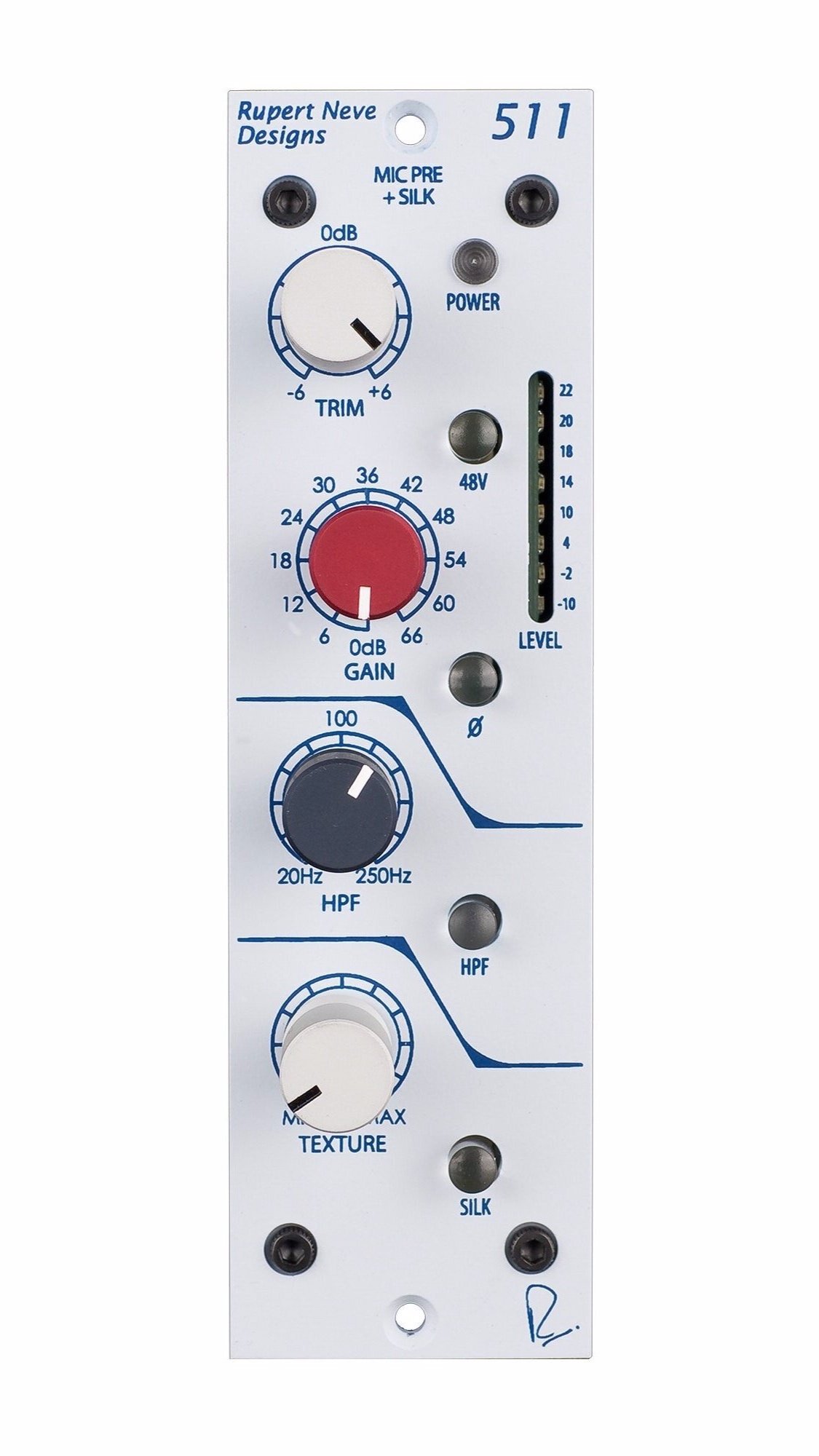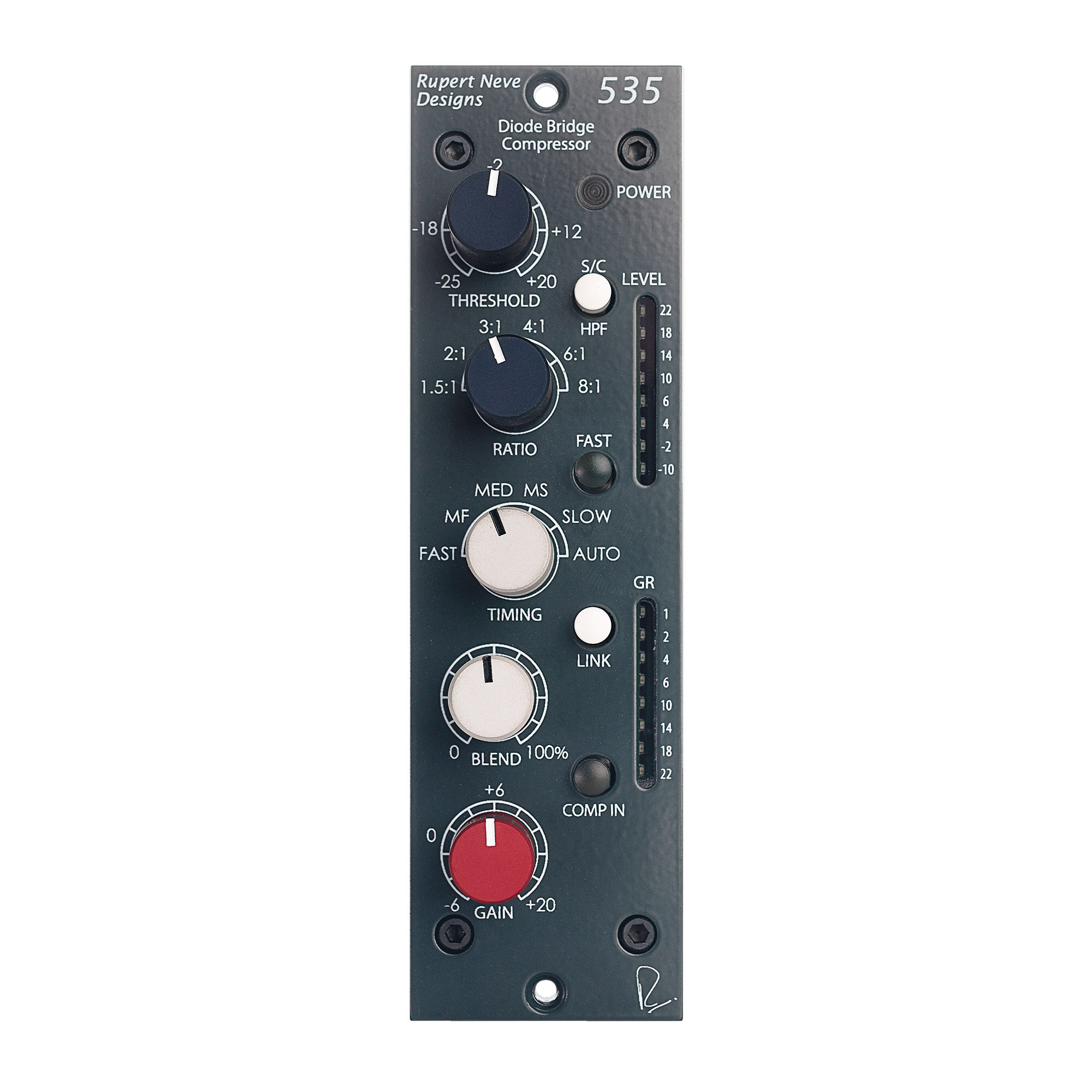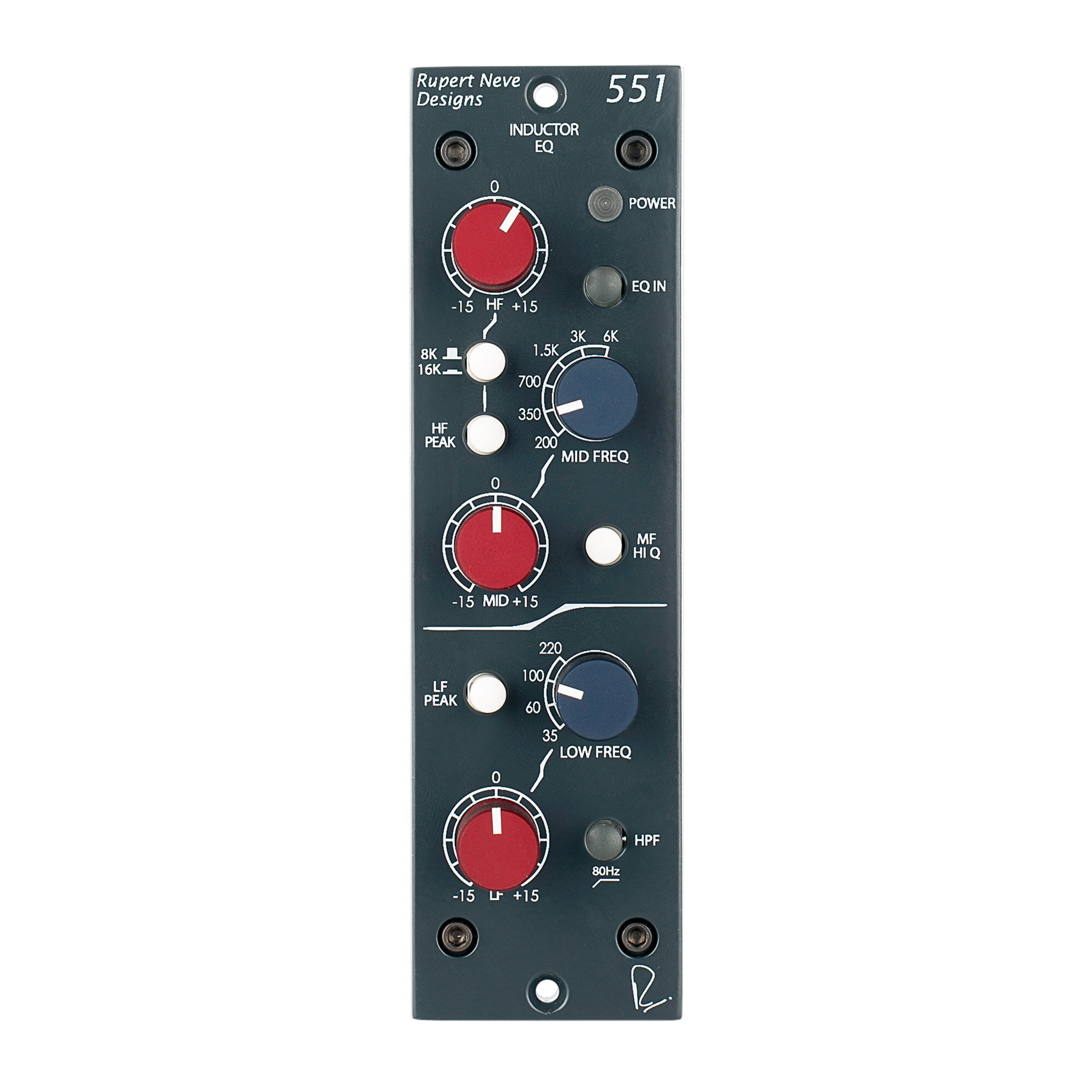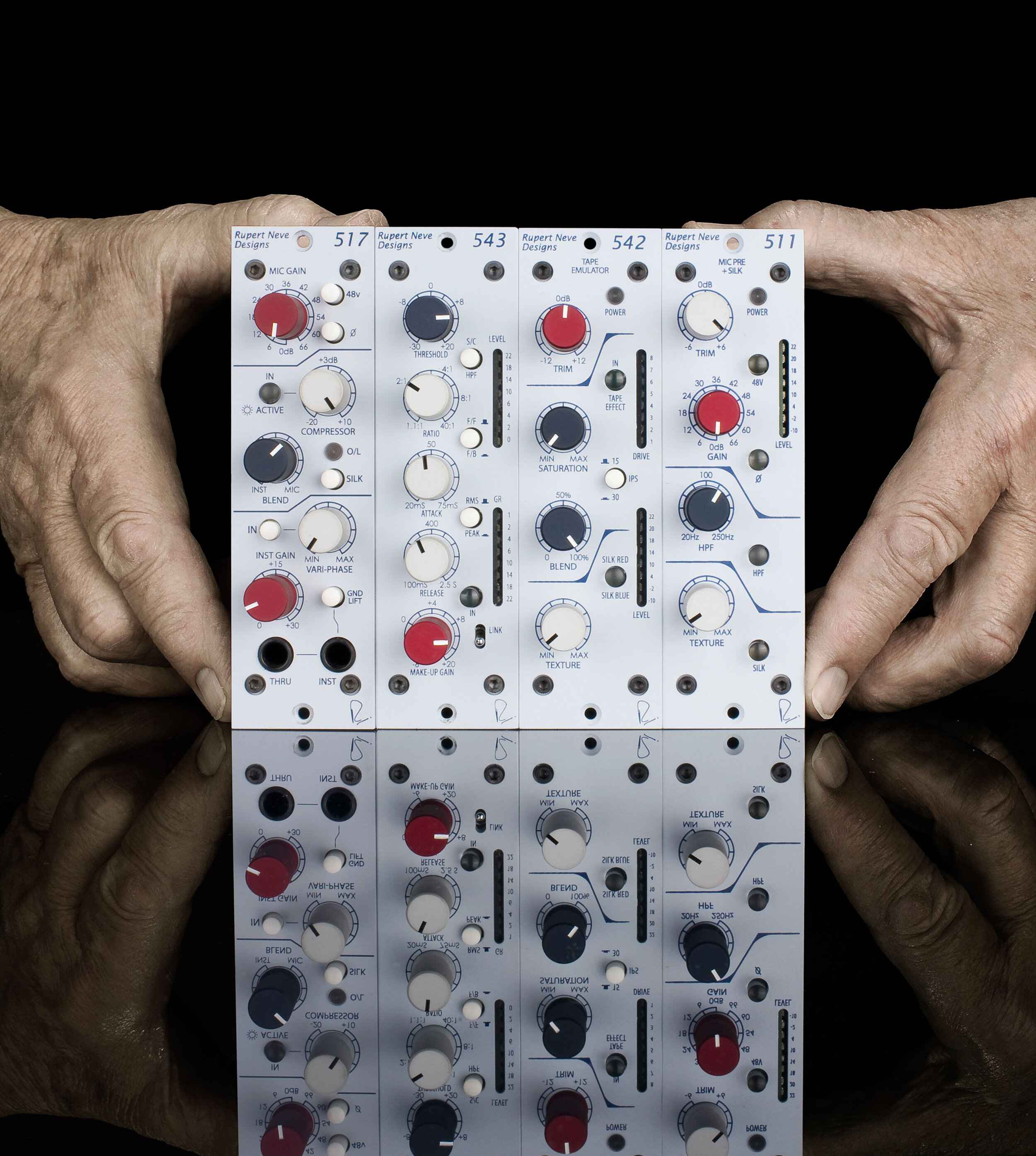
511
500 Series Mic Preamp
OVERVIEW / MEDIA / FEATURES / REVIEWS / SPECS & RESOURCESClassic sound for your 500 rack.
With a big, bold preamp, a swept high-pass filter and the powerful saturation control of variable Silk, the 511 combines legendary Rupert Neve tone with 500 Series value.

“Easily worthy of finding themselves in the best studios in the world.”
What is Silk?
One of the key features of the 511 is the Silk / Texture control. The Silk circuit was initially developed for the original Portico series mic preamplifiers, and was only a single switch – on or off – that added a specified amount of musical, pleasing harmonic saturation to the unit’s output stage.
Taking this concept one step further, the Texture knob is designed to adjust the actual amount of harmonic content from the source material.
So how does it work? By reducing negative feedback across the output transformer and adjusting this feedback’s frequency response, the Silk / Texture circuit provides the sweet, musical saturation found in Rupert’s legendary vintage designs – but with complete & precise control over the amount of classic tone you want.

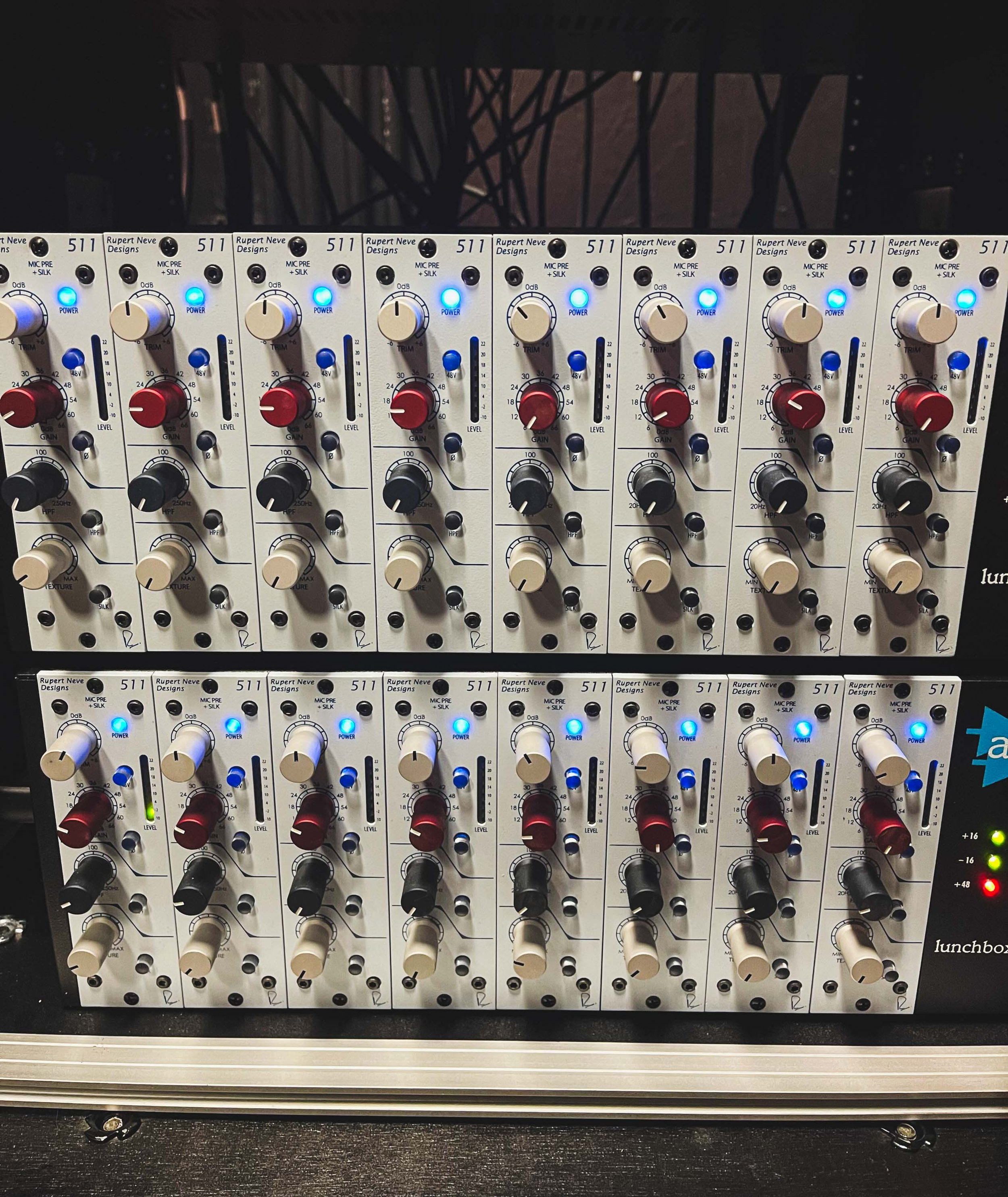
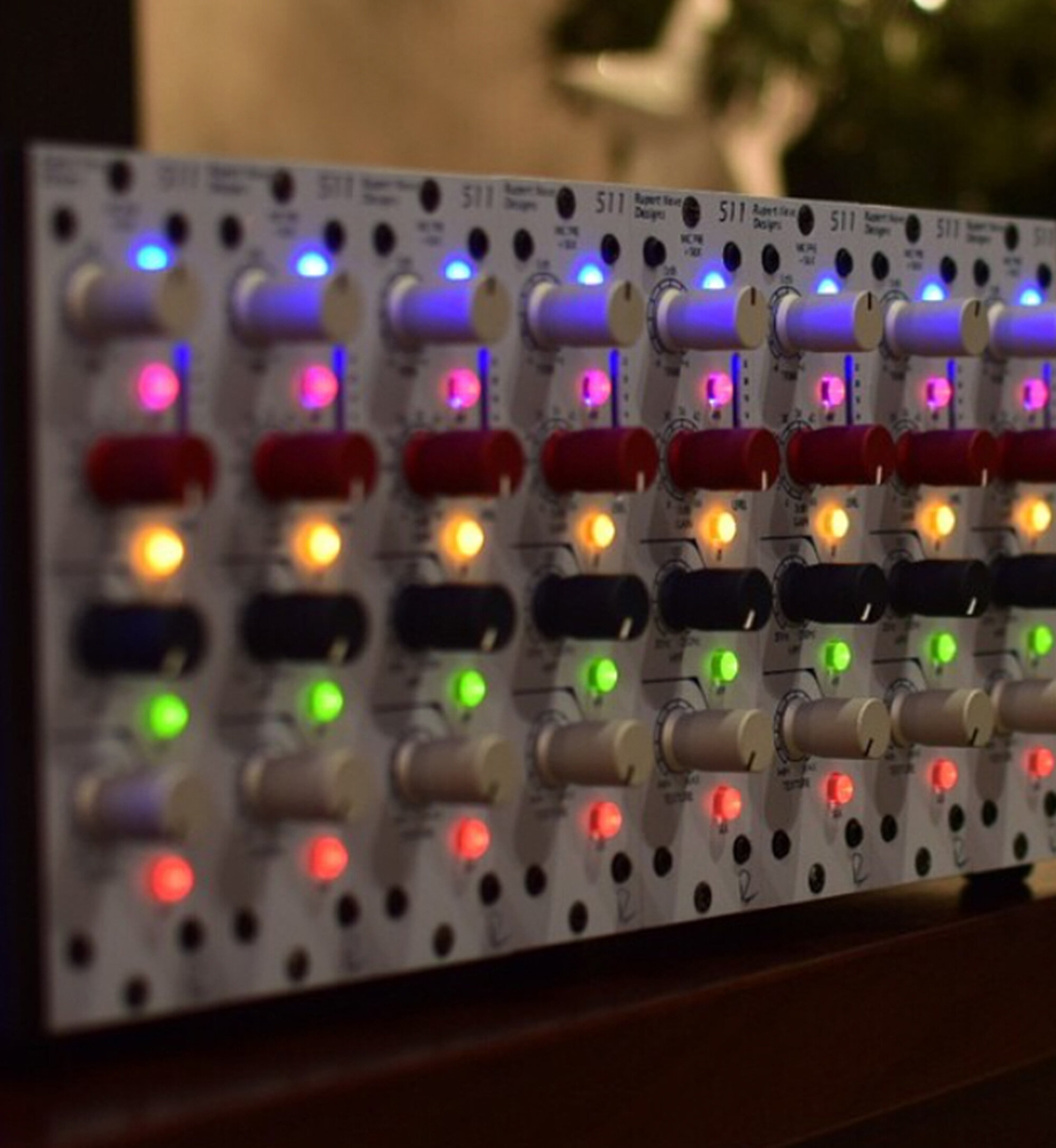
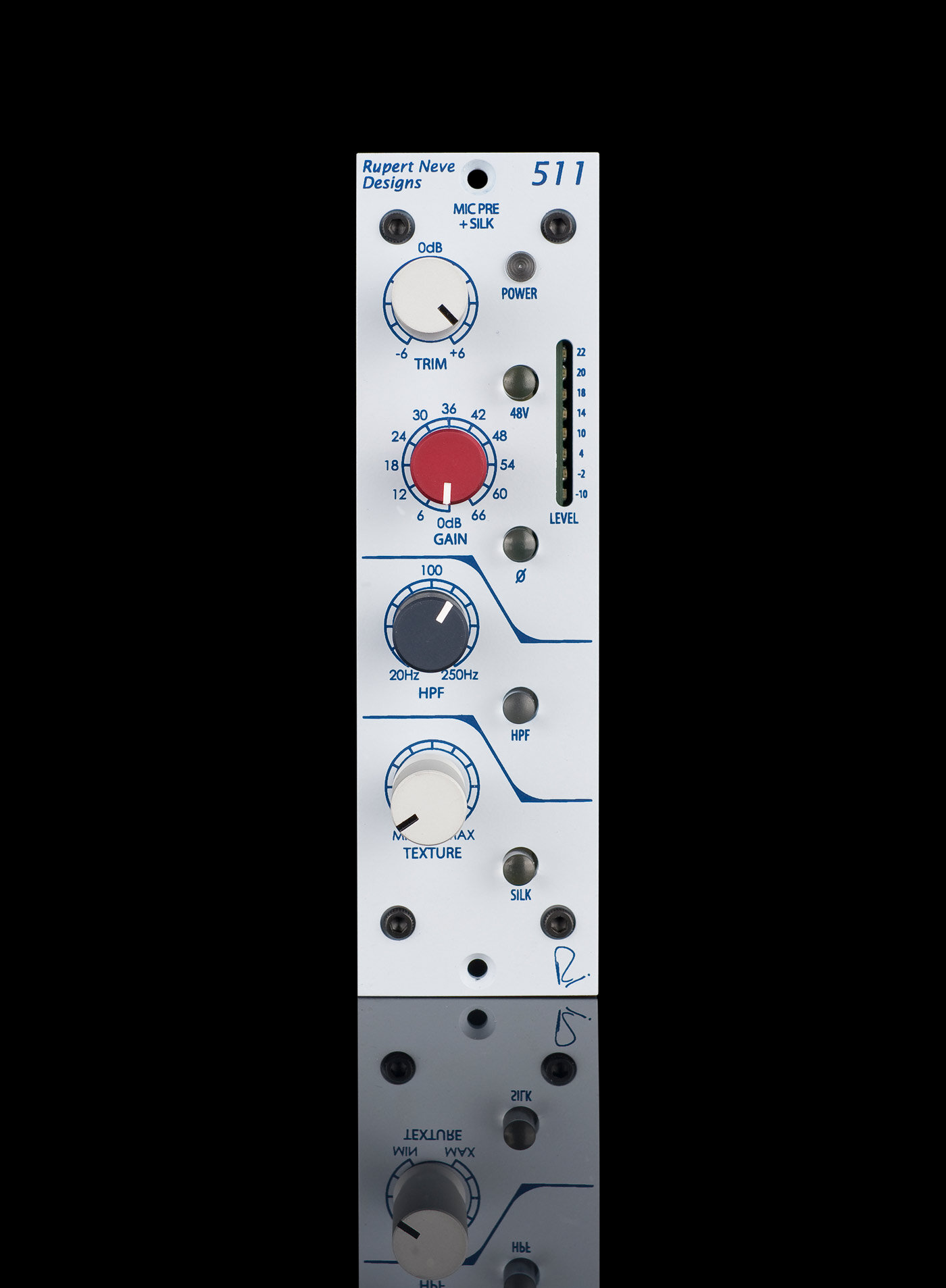

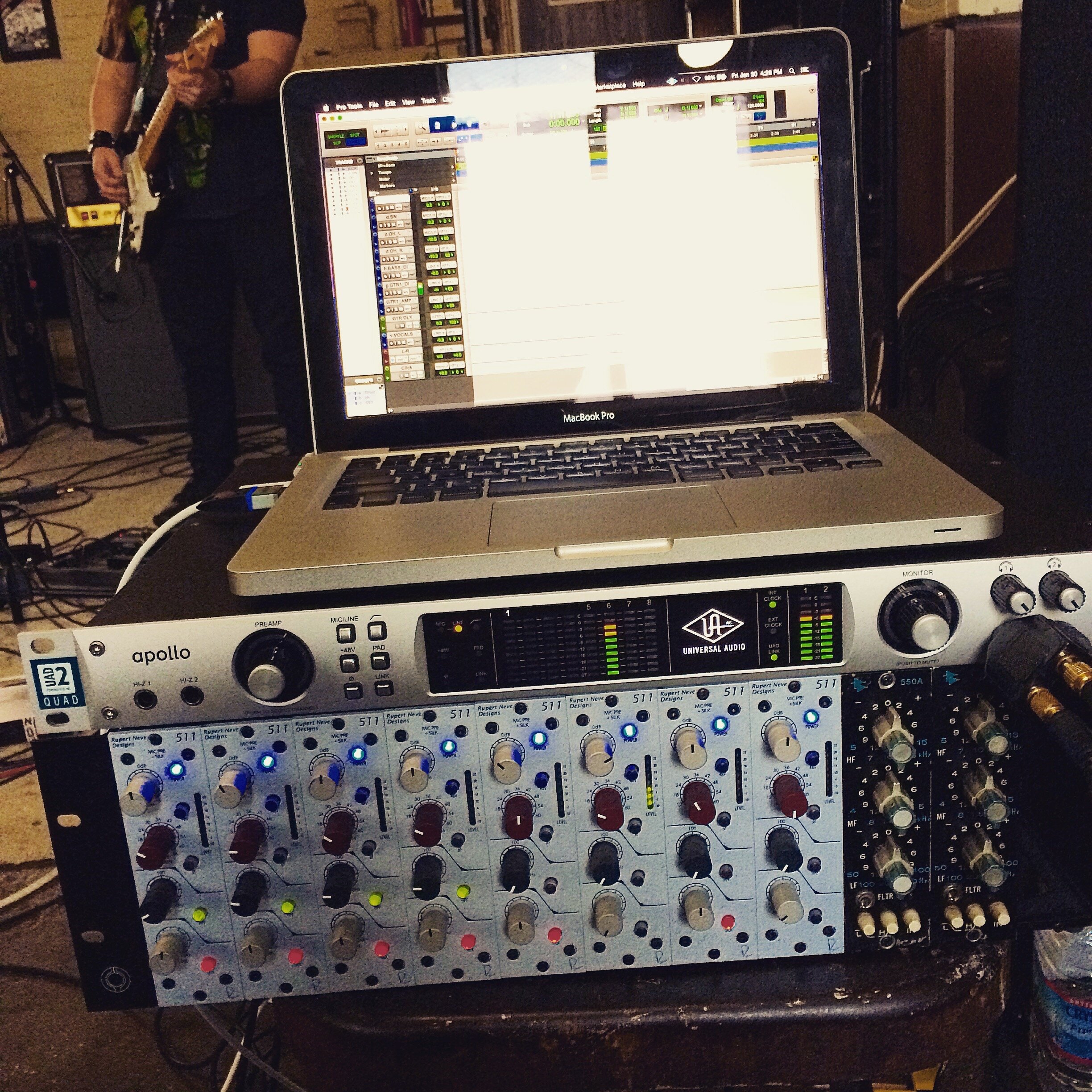
GAIN
A 12-way precision rotary switch controls gain from 0 to 66 dB in 6 dB steps. When the Gain switch is set to Unity (0 dB), the 511 can handle a balanced input signal of more than +20 dBu without an input attenuator pad – this is a unique feature that allows the 511’s Silk circuit and other features to be applied to line-level sources.
TRIM
Continuously variable +/-6 dB control to fine-tune level.
+48V
Engages phantom power on the microphone input, as supplied by the 500 series rack.
LEVEL METER
An eight-segment LED bar-graph meter displays output level (pre-Silk). The color range proceeds from green for lower level signals, yellow for intermediate signals, and red for high levels. When the 511 is clipped, the highest red LED will hold longer depending on how far above the clip threshold the signal was.
POLARITY
Push button inverts the polarity of the signal path, and illuminates when engaged. The symbol “Ø” is often used to denote opposite polarity.
HIGH PASS FILTER
The high pass filter is continuously variable from 20-250Hz and engaged by the HPF switch, which illuminates when engaged. It is a valuable aid in any signal chain, but particularly so in a microphone preamplifier. Signals below the selected frequency are attenuated at a rate of 12db / octave, getting rid of proximity effect, building rumble, air handling, motor hum, etc.
SILK / TEXTURE
Pushing the Silk button engages the Silk Red circuit, which enhances harmonic content generated by the highs and high mids of your source. This adds a sparkly sheen to the top end, and is often ideal for sources including vocals, strings, pianos, and other acoustic instruments. With Silk / Texture engaged, the distortion characteristic and harmonic content of the unit are very reminiscent of many of Rupert’s class-A vintage designs. By manipulating the Texture control, the amount of Silk can be changed from essentially absent, to well beyond the amount of coloration found in vintage units.
REVIEWS
"I’ve been using the same thirty-two 1081s for the last fifteen years day in and out, so my ears are just accustomed to the Rupert Neve vibe and energy. When I got the RND 511s for a mobile rig tracking a live record, I was blown away! It was immediately so familiar to my ears. It has all the vibe of what I was accustomed to along with some new punch. The 511s are true to the Neve lineage and I’m stoked to add them into the studio workflow as well!"
Will Yip
Turnstile, Ms. Lauryn Hill, Code Orange, Menzingers
“The 511 mic preamp is a joy to use, delivering clean or vintage characters at will…construction is to very high standards. In fact, I wish all 500-series modules were built this well!”
“Easily worthy of finding themselves in the best studios in the world.”
“Sonically, the 511 sounds great on nearly anything you put through it, working equally well with loud and soft sources. The Silk texture takes you closer to Neve’s vintage designs so you’re able to achieve the best of modern and classic approaches. There are many imitators, but there is only one Rupert Neve, and my love for his signature sound has never dwindled.”
“This thing is clean as a whistle and packs a punch. You cannot go wrong with this preamp.”
“I picked a 511 pre last year and just did a repeat. The quality built into it is evident as soon as you unbox and inspect. The silk setting gives you that vintage Neve sound if you want it, or you can dial it off for crystal clean detailed sound sources. Loving it on bass and guitar but amazing for vocals as well. An easy choice to make.”
“In many back to back tests, this Neve won out in nearly every shootout for having the right amount of body, clarity, and smoothness.”
“Warm, Colorful, and thick.”
“The Neve 511 is a must buy, the thickness and richness of the vocals are incredible. Don't be scared to raise the gain knob and get a little hot, this pre can handle anything!”
“This preamp is the new star in my little studio. Big, rich vocals and deep clarity on an KM 184 recording acoustic guitar. Best of all, all I had to do was plug in my mic and turn it on. I am not a preamp connoisseur so take this with a grain of salt but...the Neve 511 is the thing that 'made the difference'.”
“In a couple words if you love the way audio sounds this thing is magical. I cannot say enough good about it.”
“Bottom line is that this pre produces a sound that I have spent countless hours trying to create with plugins in the box.”

SPECIFICATIONS & DOWNLOADS
NOISE
Measured at Main Output, un-weighted, 22 Hz - 22 kHz, source impedance 150 Ohm balanced. Noise specifications may vary depending on which 500 series chassis is being used, and / or interference from stray magnetic fields.
Unity Gain: Better than -103 dBV
Gain @ +66 dB: Better than -60 dBV
Equivalent Input Noise: -125 dB
FREQUENCY RESPONSE
Main output, no load.
+/- 0.1 dBu from 10 Hz to 31.5 kHz
-2.6 dB @ 120 kHz
MAXIMUM OUTPUT LEVEL
+23 dBu
TOTAL HARMONIC DISTORTION AND NOISE, NO SILK
@ 1 kHz, +20 dBu output level, no load: Better than 0.0025%
@ 20 Hz, +20 dBu output level, no load: 0.025% Typical (2nd and 3rd harmonic)
TOTAL HARMONIC DISTORTION AND NOISE WITH SILK ENGAGED
@ 100 Hz, +20 dBu input level, no load.
TEXTURE @ min: 0.015%, mostly 3rd harmonic typical
TEXTURE @ max: 2%, mostly 2rd harmonic typical
GAIN
Unity up to +66 dB in 6 dB steps.
Trim continuously adjustable from -6 dB to +6 dB.
PHANTOM POWER
Supplied by the 500 series rack power supply. Switch selectable on faceplate.
HIGH PASS FILTER
Continuously variable swept frequency from 20 Hz to 250 Hz.
Slope: 12 dB/Octave
POWER REQUIREMENTS
@ +/-16VDC, 100mA
UNIT DIMENSIONS
1x 500 Series Module: 1.5” W x 5.9” D x 5.25” H
(3.8 cm W x 15 cm D x 13.3 cm H)
UNIT WEIGHT
1.5 lbs. (0.7 kg)
SHIPPING DIMENSIONS
10” W x 8” D x 3” H
(25.4 cm W x 20.3 cm D x 7.6 cm H)
SHIPPING WEIGHT
3 lbs. (1.4 kg)
FREQUENTLY ASKED QUESTIONS
Yes, all of our modules are designed within the 500 Series specification and we are not aware of any instances where they have not worked as intended.
While the amplifiers are similar, the 511 is a transformerless input stage and the line amplifiers for all the 500 series products run on lower voltages with slightly lower headroom, due to the inherent limitations of the 500 Series format. The performance of the 511 is still excellent however.
Yes, just make sure to disable +48V phantom and turn the gain down to zero before connecting the inputs.
No, the impedance is not high enough to properly interact with a high-Z source. Use a direct box like the RNDI or RNDI-S to convert the impedance to mic level, or consider the 517 Mic Pre / DI / Compressor module instead.
We utilize an electrogalvanized chassis to shield the internal circuitry from interference. With this process, it isn’t possible to “finish” the chassis metal (i.e. polishing or anodizing) so the machining marks from forming the metal will be visible. In normal operation inside a 500 series rack, this metal will never be visible.
We use standard 4-40 ¼" screws to secure our 500 series rack modules. Each of our modules and our R6 and R10 racks include these screws. Please contact our service department if you have questions or need additional screws.


